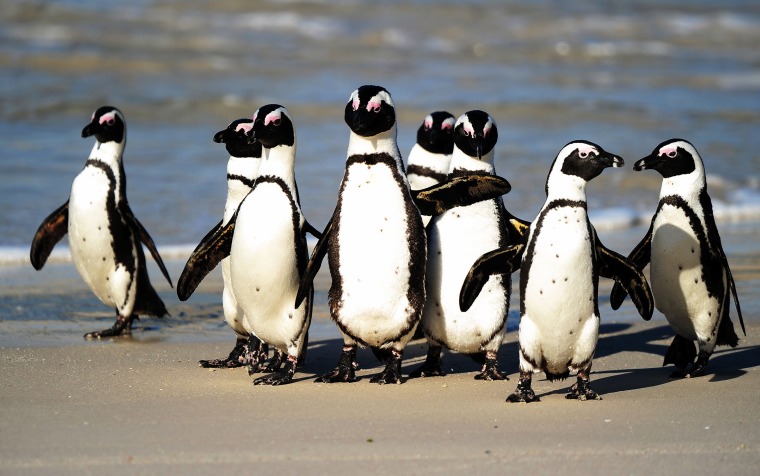The way African penguins talk — in shrieks and squawks — during breeding season may not sound like much, but new research published Tuesday suggests that the raucous calls follow linguistic patterns similar to some found in human language.
A team of European scientists studied 590 vocalizations from 28 adult African penguins in Italian zoos and noticed parallels between the penguins' song and two laws that apply across a broad swath of human language. The discovery is the first time these traits have been observed in a nonprimate species.
The researchers found that, as outlined in Zipf's law of abbreviation, vocal sounds that penguins use the most tend to be shorter, similar to conjunctions like "and" or "so" in human speech. Penguin "chatter" also adheres to the Menzerath-Altmann law, which states that the size of a linguistic construct is inversely proportional to its constituent parts. Essentially, that means longer words are typically made up of sequences of short syllables.
"We found the same thing in the songs of the African penguin, where songs containing many acoustic elements are made of acoustic elements of shorter duration," said a co-author of the study, Livio Favaro, a researcher in the department of life sciences and systems biology at the University of Turin in Italy.
Previous research has found similar patterns of vocal sequences in the calls of gibbons and baboons.
In the new study, Favaro and his colleagues analyzed what's known as ecstatic display songs, which penguins — typically males — use to communicate during breeding season.
Although the research, published in the journal Biology Letters, draws similarities to human speech patterns, Favaro emphasized that the ecstatic display calls of penguins don't mirror the complexity of human language. Rather, the vocalizations convey basic information about a penguin's identity, which he likened to the type of rudimentary information that can be inferred about a person just by hearing their voice over the phone.
What the likenesses to the two laws suggests is that, like humans, penguins have evolved to communicate efficiently — a principle known as information compression that can be found in human language.
Download the NBC News app for breaking news
F. Stephen Dobson, an evolutionary biologist and co-author of the book "Why Penguins Communicate: The Evolution of Visual and Vocal Signals," said the findings provide an "interesting" glimpse into behaviors of a relatively understudied penguin species. Dobson wasn't part of the study.
He noted some of the study's limitations, among them that the research focused on the structure and speed of the calls rather than the information being passed among the birds, which may be a better measure of their communication.
"You don't know which of the vocal elements are things that are actually information for the penguins," said Dobson, a professor of biological sciences at Auburn University and a fellow at the University of Strasbourg in France.
Still, he praised the research and suggested ways to expand on the findings, such as using a computer program to manipulate the penguin calls to gauge the responses of the animals and determine which parts of the vocal sequences contain crucial information. For example, that can be done by altering the frequency of the sound or the decibel level, Dobson said.
Favaro said he intends to continue analyzing vocal communication in African penguins, but he welcomed similar research on other types of penguins, as well as other species.
"This paper paves the way for future studies," he said, "because it's very likely that we're going to find the same patterns in other animals."

